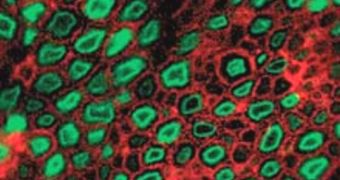Using animal models, researchers have been able to demonstrate for the first time that shining millisecond-long pulses of light on nerve cells can produce movement.
The investigation, which was conducted on unsuspecting mice, relied on the use of a tiny LED device, and also on employing the help of a special type of light-sensitive protein.
The molecule is called channelrhodopsin-2 and is derived from green algae. When blue light is shone on it, the protein triggers an electrical signal in specific nerve cells.
According to the researchers, the target and function of the action the light triggers can be controlled by selecting only specific nerve cells to get the light-responsive protein.
Additionally control is possible by shining the light only on certain groups of neurons. With these two methods, experts can now achieve extremely fine control of muscular contractions.
The proteins that allow for this function are controlled in such a way that they are only expressed in certain neural pathways, and not throughout the body.
This field of research is called asoptogenetics, and is a division of the larger, emerging field of optogenetics. The goal in this area is to enable scientists to control muscle movement by using light.
The control technology was developed by expert Karl Deisseroth, who is the coauthor of a new study detailing the findings. The work appears in the latest issue of the esteemed journal Nature Medicine.
The expert holds an appointment as an associate professor of bioengineering at Stanford University, where he is also a professor of psychiatry and behavioral science,
“This is a brilliant study, really beautiful science. I think there are many” clinical implications here, says bioengineering expert Robert Kirsch, quoted by Technology Review. He was not a part of the study.
He is the associate director of the Cleveland Functional Electrical Stimulation Center, and he also holds an appointment as a professor at the Case Western Reserve University (CWRU).
The recently developed optical control method provides “fantastic advantages over electrical stimulation,” adds Scott Delp, the senior author of the Nature paper.
He is a professor of bioengineering, mechanical engineering, and orthopedic surgery at Stanford. The expert adds that using light does not instill the same level of fatigue in the muscles as using functional electrical stimulation (FES).
The US Food and Drug Administration (FDA) has approved FES use some time ago, but devising a way to replace this method remains a priority.

 14 DAY TRIAL //
14 DAY TRIAL //